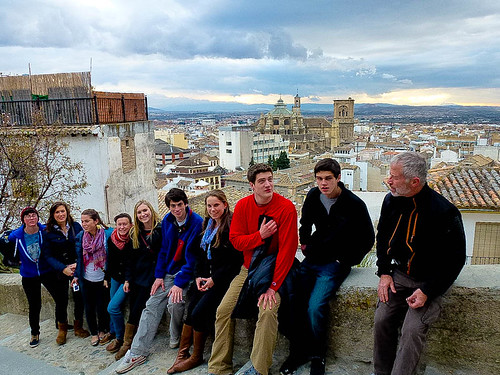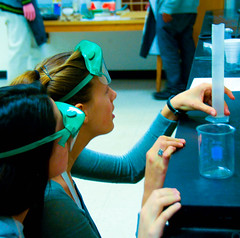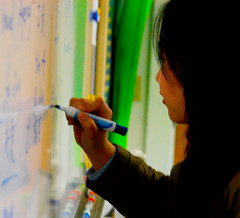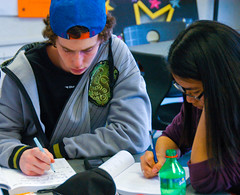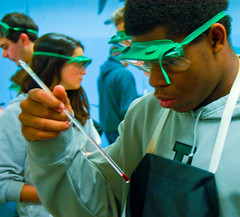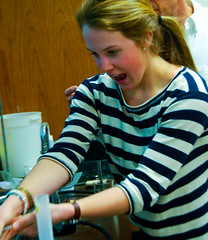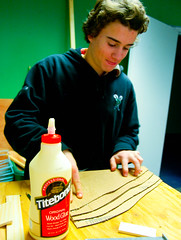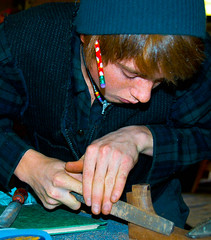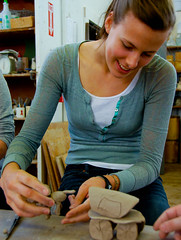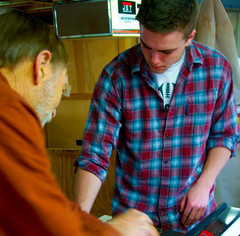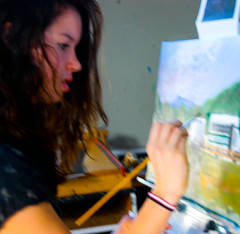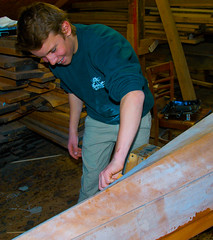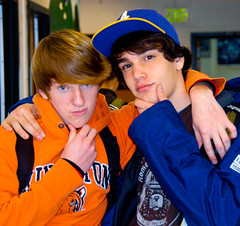We think of "work" and "play" as not only distinct, but as opposing concepts. Work is described as
arduous,
laborious and
hard. Play, on the other hand, is considered
fun,
frivolous and
recreational. We work because it yields a product or reward. We play for physical or mental exercise; a product is rare....usually a cheap plastic trophy. Yet there is a reward to play: we're completely alive when at play; our attention is rapt; we exist in the present moment, thrilled...exhilarated.
I just stumbled on a video of a digital strategist/entrepreneur named Aaron Dignan entitled
Why the Future of Work Is Play in which he brilliantly posits that game mechanics can be structured into work systems so that we work with the productivity, passion and absorption of children at play.
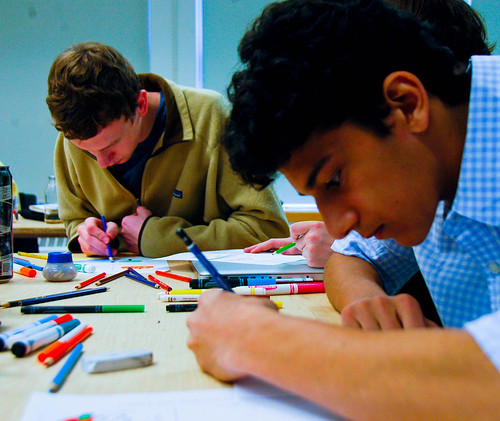
Dignan doesn't pretend to be an academician. He leaves it to you and me to apply the theory to schools. But he provides a hint as to what we want to avoid. "Boredom is everywhere," he observes, "and it's a by-product of poorly structured systems." And, "Teenagers with excess free time and hungry minds are forced to choose from a scant menu of options, often resorting to mindless forms of entertainment to pass the time." (
Game Frame, by Dignan) So, by inference, limited free time coupled with a rich menu of activities and options are steps in the right direction. No one is bored playing a sport (or
Call Of Duty.)
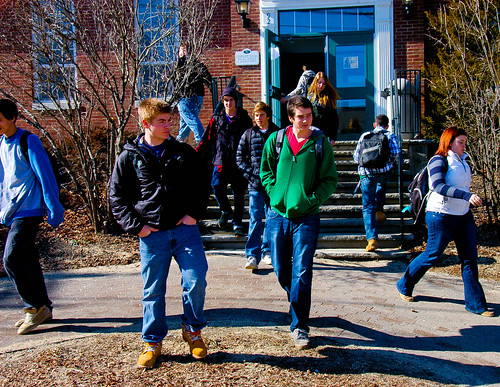
In systems with structure and anticipated rewards (like games) the telltale sign,
boredom, is rare. Investment and engagement are common. And, challenges are reasonably matched to skills, so "players" anticipate the reward of success. (I.E., support systems encourage students to risk trying hard.)
These kids are determining whether the hydrated salt they are handling is magnesium sulfate heptahydrate, copper II sulfate pentahydrate or sodium acetate trihydrate.
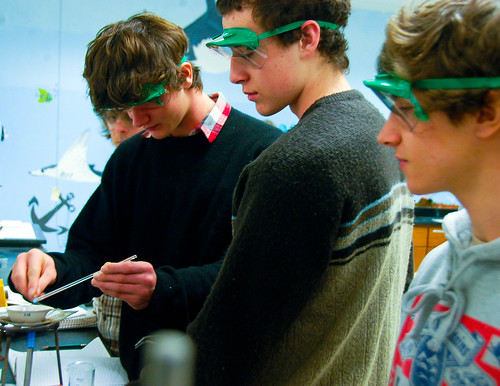
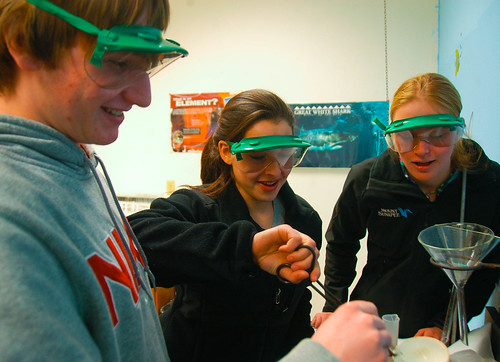
In the video, Dignan suggests that a child's play is ultimately an application of the scientific method to one's environment. "Let's see what happens if I do this....!" I take this as an endorsement of hands-on learning in all forms, as the student becomes the active agent in the educational process.
In architectural design, Emily assembles her model of an expansive, one-story ranch constructed into a sloping hillside in California.
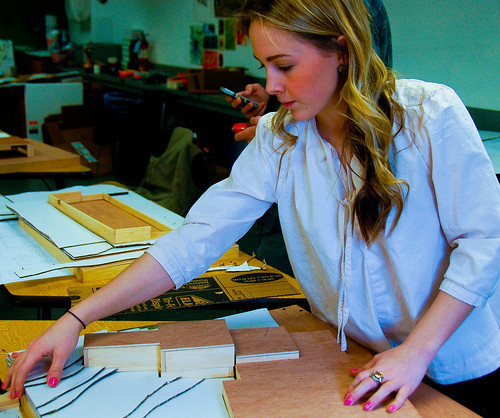
In forensics, students are separating beads representing components of a DNA molecule to identify which of four murder suspects is guilty of the crime.
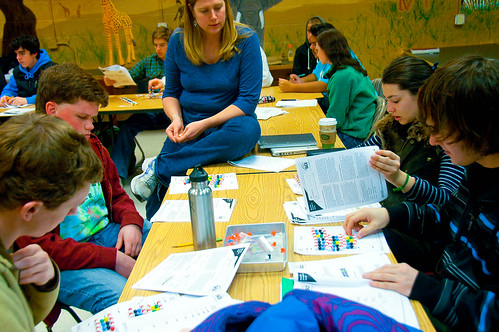
Thaddeus adds a little color to geometry!
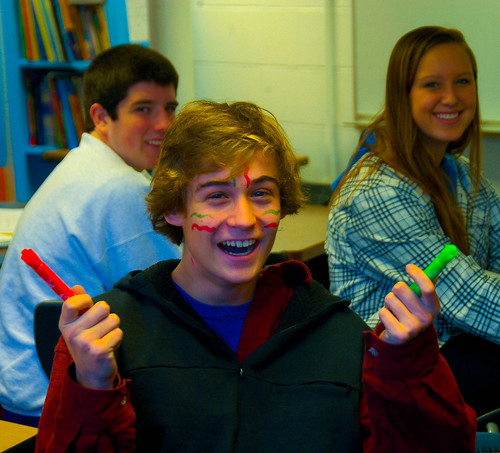
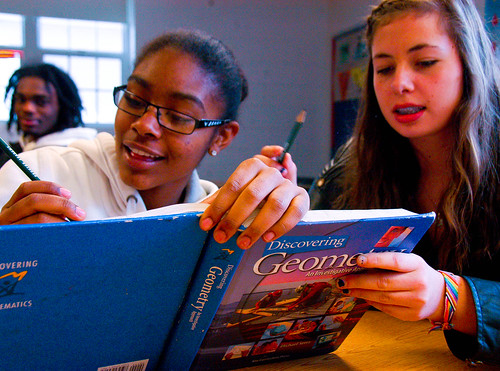
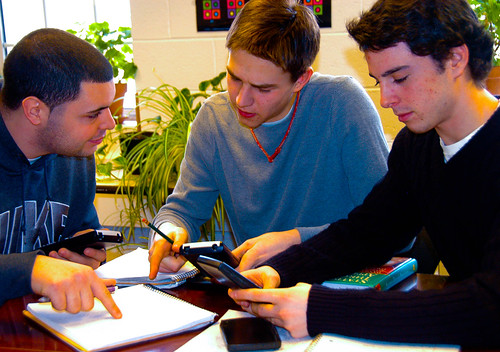
To study floral sexual systems, Nick and Derek have apparently denuded their tulips.
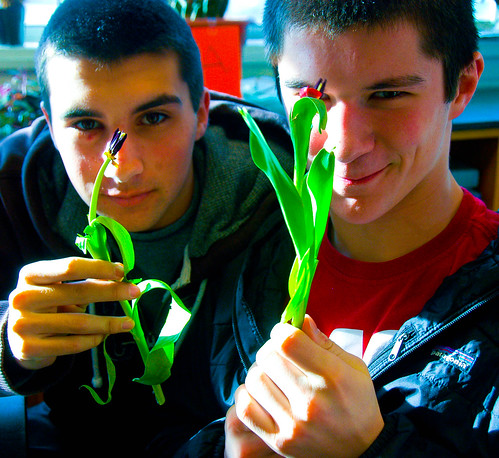
In their eighth week of immersion, Proctor in Spain pauses for a breath while hiking into Granada's ancient Moorish
Albaicín neighborhood.
